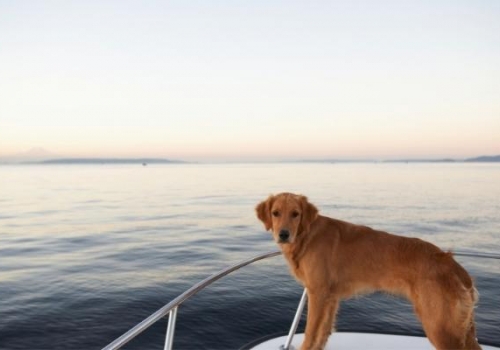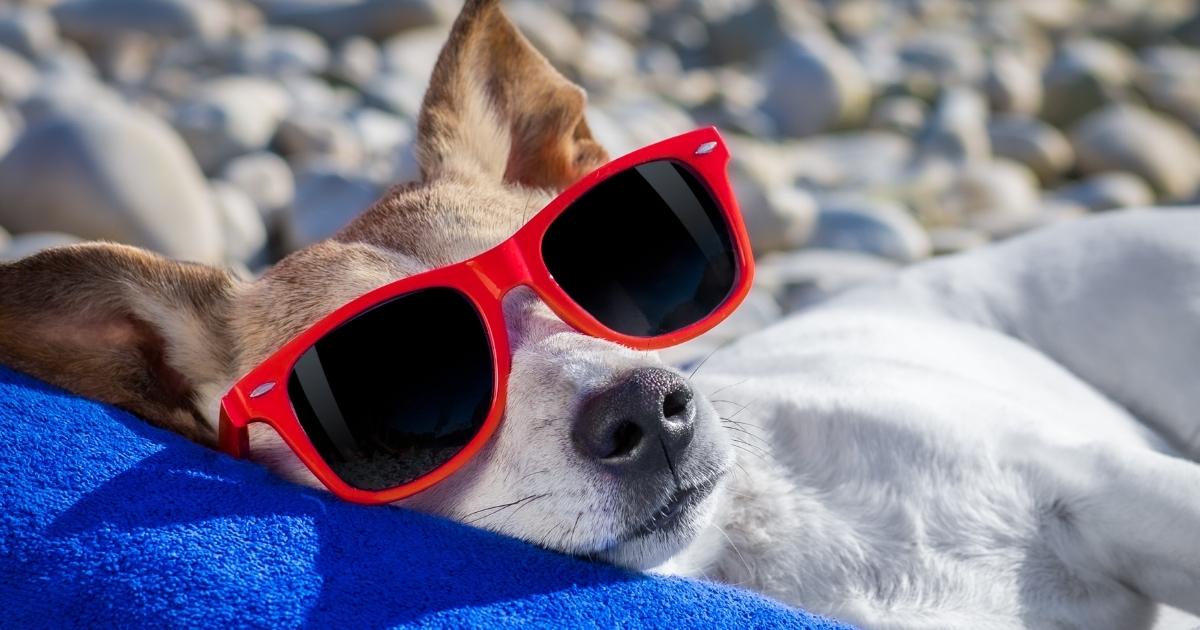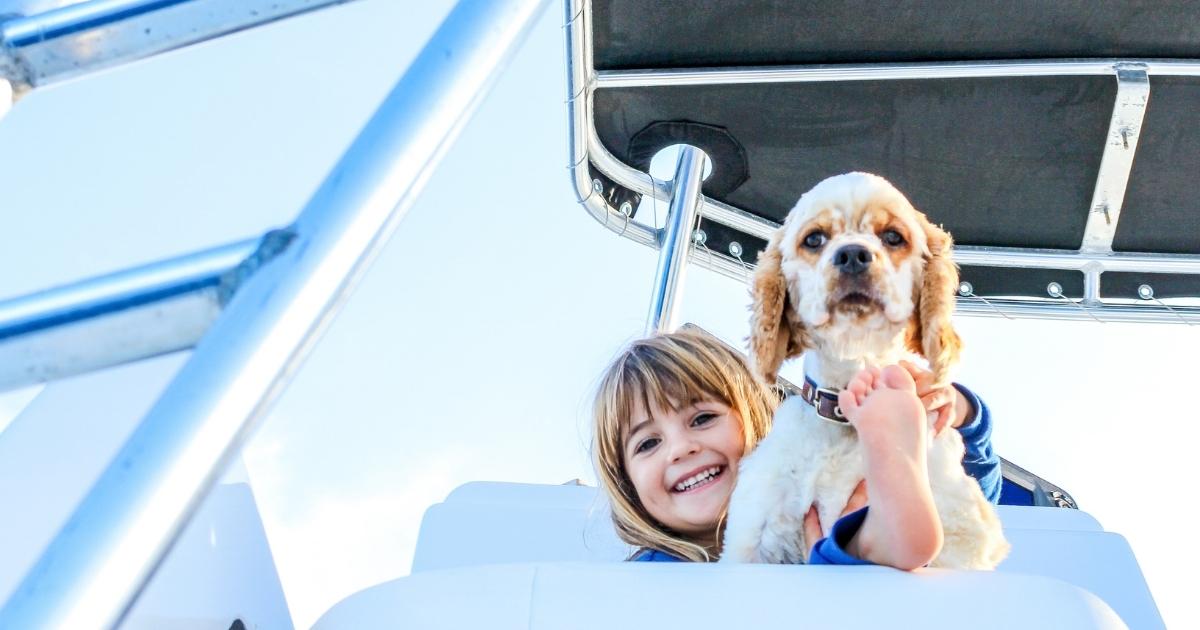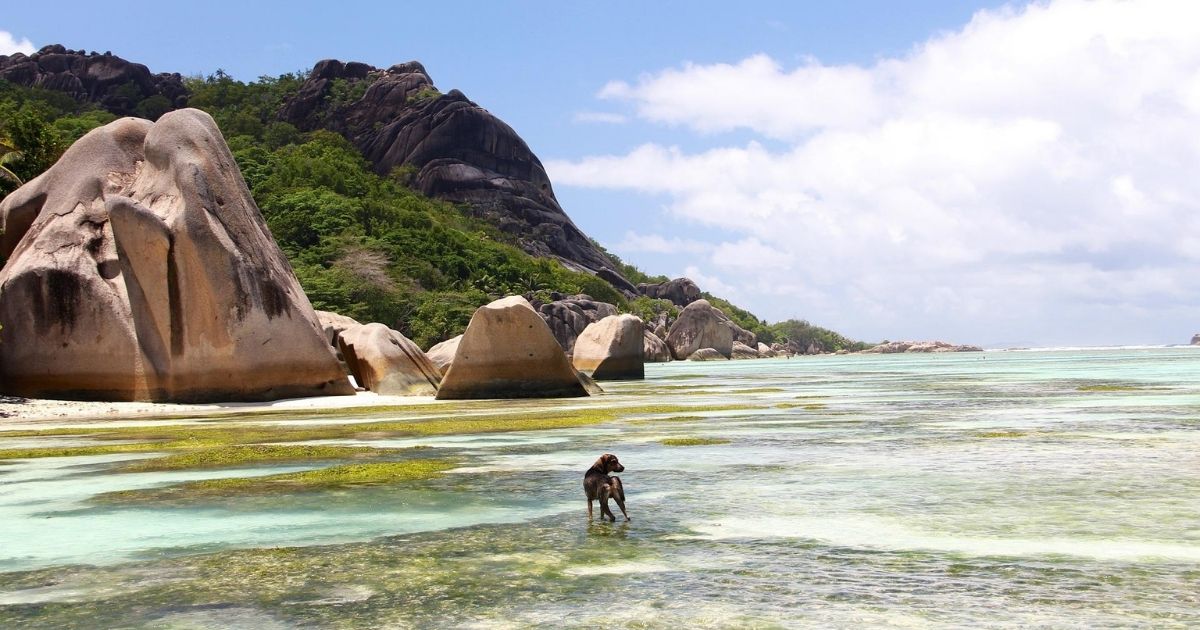A Complete Guide to Looking After Pets on Board: Part 2

Following on from part one of our article, Isobel Odendaal discusses even more tips and tricks for keeping pets happy and safe on board, including how to keep the yacht clean and poisonous plants to look out for.
Keeping the yacht clean with dogs on board
On private yachts where owners often bring their pets along for visits, it may be a good idea to have permanent, durable and washable covers made for the furniture (if pets are allowed on the furniture), much like carpet runners.
Find a central place near the aft deck for storage of all the dog items such as leashes, wet wipes/baby wipes, old towels, toys, tennis balls, treats and poop bags for shore walks. This way it is always handy and nearby for the next crew member taking the pet to shore.
For smaller dogs, it might be an idea to have a large pen to create a safe zone with a fluffy blanket, a dog bed, toys and treats. This pen should not be the only place he is allowed in, but it might cut down on him getting on furniture or beds.
Should the dog allow it, you can purchase non-slip slippers with grip pads on the bottom. This prevents slipping accidents and also nails from scratching wooden floors and decks. If you have wooden stairs or stairs they may slip on, try to find a way to cover the stairs with an old towel or non-skid as it will save the dogs from getting hurt and help with scratch marks on the wood.
Our three dogs often go on sailing adventures with us and they all have flotation harnesses so that they can be rescued in case they fall out of the tender or boat. Having two Pitbulls, who not really known for their great swimming abilities, we will never attempt any journey without these. Should the dogs be allowed to go for swims off the swim platform, it is of course crucial to be supervised and dogs should be dried and groomed as soon as possible after their swim.
Don’t deworm pets whilst on board, as they will get a runny tummy. Play with them, create fun and stimulating activities and often take for walks if near the shore. Dogs, much like young children, need to be stimulated to burn off all that excess energy! Give them chew toys to avoid them accidentally chewing any valuable furniture whilst on board, and also try to pet proof the yacht and stow vases, valuable items, blankets and shoes. Finally beware of swinging tails - no Lalique on low tables, anywhere!

Carpet cleaning and vacuuming
Should there be any lingering smells around the areas where a dog had an accident, place open bowls or coffee grounds around the area - it will help neutralise the smell.
A good quality pet hair vacuum is an essential item, one that might even have to be a special purchase for a yacht prior to furry guests arriving. Look into Bissell© Pet Hair Eraser Turbo Plus or Miele Classic C1 Cat and Dog Canister Vacuum or Dyson Cyclone V10 Absolute Lightweight Cordless vacuum.
Unfortunately, a pet on board will also mean more frequent vacuuming, especially if the pet sleeps in beds and on the furniture. If a pet had many indoor accidents during the trip, it may be best to get professional carpet cleaners in after their departure.
I also know of some yachts that use a Roomba© and switch it on whilst setting up for breakfast or during the day when the guests are off the yacht. With all vacuums used for pet hair, it is very important to empty the filter daily as pet hair will smell if kept inside a vacuum. Also investigate purchasing a Bissell © carpet cleaner (if your carpet is suitable) - it is small, compact and lightweight and will take care of puppy accidents quickly.
For dog accidents inside the yacht, the best method is to quickly pick it up with a clean, dry cloth - the longer you wait, the worse the stain will get. Use a mix of hot water and oxy powder, then dabbing should do the trick. Remember that enzyme cleaners, baking soda and vinegar work better for eliminating any lingering smells.
For long haired dogs and cats on board, use rubber gloves, carpet rakes and squeegees over the furniture and carpets regularly as these are great for picking up fur.
Think of installing temporary baby gates in areas that may be dangerous for small puppies or areas where the dogs are not allowed.
We have recently found a wonderful product called DOG ROCKS for our pets. It is something you put in their water and it not only causes less yellow spots on our lawn, it also eliminates the sharp smell of the urine. This will help with create a lower urine/defecation smell on the Astro turf or inside the yacht.
Another safety aspect to consider would be automatic aft deck doors – ask the engineers to set these to avoid a crushing accident if the doors accidentally close on the puppy.

Poisonous flowers and plants for pets
Seeing that a guest visit or charter is synonymous with flowers and plants, it is important to do your research on purchasing non-poisonous flowers should guests bring their pets along for the trip.
When pet parents or their carers think of what can be poisonous to their dogs, the things that come to mind are usually chocolate, grapes, garlic – the usual suspects. However it is easy to overlook commonplace items like the plants we use to spruce up a cabin or saloon.
While certain plants can be aesthetically pleasing, they can also cause a whole bunch of problems if your dog chows down on them. That is why it’s essential for to know which indoor plants are toxic to dogs, in addition to outdoor plants as well.
These flowers are highly toxic or allergens to pets and should be avoided:
-
Amaryllis plant - this plant can cause vomiting, depression, diarrhea excessive drooling, and tremors.
-
Azalea plant - can cause vomiting, diarrhea, a drop in blood pressure, weakness, cardiac failure, coma, and can even be life-threatening.
-
Bird of Paradise - not to be confused with the less toxic Strelitzia reginae, this plant, if consumed, can cause oral irritation, excessive drooling, vomiting, diarrhea, mild nausea, drowsiness and difficulty swallowing.
-
Daffodil - can cause vomiting, hypersalivation, diarrhea, arrhythmia, convulsions and low blood pressure.
-
Daisy - can cause vomiting, diarrhea, excessive drooling, incoordination and dermal allergic reactions.
-
Eucalyptus - can cause excessive drooling, vomiting, diarrhea, depression, and weakness.
-
Hyacinth - consumption can cause intense vomiting, diarrhea, depression and tremors.
-
Hydrangea - can cause vomiting, depression, diarrhea and other gastrointestinal disturbances.
-
Iris - while the entirety of this plant is toxic, the rhizomes (underground stem) are most potent and, if ingested, this plant can cause vomiting, drooling, lethargy and diarrhea.
-
Calla Lily - can cause oral irritation, a burning sensation on the tongue and lips, excessive drooling, vomiting and difficulty swallowing.
-
Lily of the Valley - there are a ton of reasons why lilies are such popular plants—they are sweet-smelling, they have adorable little white bell-shaped flowers and they can thrive in shady places. But it is highly poisonous to dogs. Even a small exposure to any part of the plant can cause heart problems for dogs - changes in heart rate and rhythm. Eating a few leaves or bulbs can also make your pup throw up and cause low blood pressure, disorientation, seizures or a coma.
-
Morning Glory - can cause vomiting and even hallucinations.
-
Rhododendron (Azaleas) - it only takes consuming a few leaves to create a severe reaction, including excessive drooling, vomiting, loss of appetite, diarrhea, colic, depression, weakness, stupor, paralysis, cardiovascular collapse, or worse – dog may become comatose or even die.
-
Jade – can cause vomiting, a slow heart rate, incoordination and depression, which can be hard to spot.
-
Tulip - the bulb of this plant, if ingested, can cause oral irritation, excessive drooling, and nausea.
-
Sago Palm - toxic to all pets and the symptoms include vomiting, diarrhea, seizures, liver failure and potentially death. The seeds or ‘nuts’ contain the largest amount of toxins.
-
Oleander - every inch of this plant is poisonous to dogs, from the flower petals to the pointy, long leaves. It also contains cardiac glycosides, which can create a change in heart rhythms, diarrhea, stomach pain and drooling.
-
Philodendrons - these plants contain insoluble calcium oxalate crystals, which can irritate the dog’s mouth and lips.
-
Dieffenbachia (also known as Dumb cane) – burning of mouth, lips and tongue, vomit, breathing difficulties.
-
Japanese Yews (also known as Buddhist pine or Southern yew) - can cause vomiting, lethargy, a wobbly gait, heart and blood pressure changes.
-
Cyclamen - causes drool, vomit and have diarrhea.
-
Autumn Crocus – vomiting, diarrhea, liver failure.
Any plant can upset a pet’s stomach, but the toxic ones can produce severe symptoms like intense vomiting or organ damage, depending on the plant and how much the pup ingests. Here are all the plants known to produce the more serious side effects. For a complete list of poisonous plants, click here.

What should you do if you believe a dog has consumed something poisonous?
If you believe the dog has consumed a poisonous plant – or anything poisonous for that matter – contact a veterinarian or an emergency clinic immediately. It can be helpful to the veterinarian if you know or can identify the plant the dog ingested. If the dog vomited, bringing a sample with you may be beneficial for testing, analysis and for determining the proper treatment.
Do not induce vomiting unless it’s recommended by the vet as vomiting can exacerbate the problem.
Perform CPR if the dog is not breathing.
Preventing dogs getting at poisonous plants
The simple way to prevent pets from getting into poisonous plants is to keep the toxic ones out of the yacht. However, even for the most vigilant stews, that can be easier said than done.
Poisonous plants can find their way on board in bouquets and other floral decorations that often include Baby’s Breath. If eaten by a curious canine, these can cause tummy troubles. A few tips include:
-
Pet-proofing the yacht by keeping any problem plants out of paw’s reach.
-
Limiting their access to the areas where you keep your plants and flower arrangements.
-
Decorating with non-toxic or artificial plants.
By preparing yourself ahead of time, you will be more likely to remain cool, calm and collected if an incident ever were to occur.
About the Author:
After working in the super yacht industry as a stewardess, chief stew and purser for 10 years, Isobel Odendaal moved back to her home country, South Africa, and co-started a training school for super yacht steward/esses, Super Yachting South Africa, the only accredited provider of GUEST courses in the country. She continues to learn and teach every day, enjoying responding to the questions she receives on the facebook forum Yacht Stewardess and Steward Tips and sharing her knowledge in a series of expert articles on OnboardOnline.

Post your comment
You cannot post comments until you have logged in.
Login to post a commentComments
No one has commented on this page yet.
RSS feed for comments on this page | RSS feed for all comments